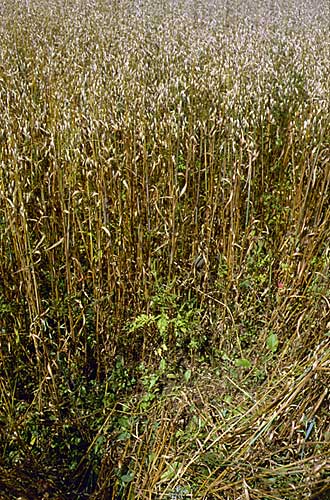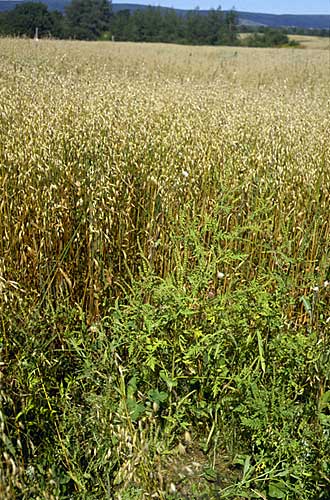Effect of weeds on oats
& effect of oats on weeds
 Control Plot (no weeding): weeds are present but were shaded by the faster growing oats and produced only a small biomass |
 Plot with no oats: Without the faster growing oats to shade them, weeds grew very large. The main weed is ragweed. |

| The usual practice for controlling weeds in oats was to harrow a field before seeding so that oats were seeded into a clean seedbed. Then they would be harrowed again after the oats were 7 to 10 cm high. At that point the oats are well rooted and recently germinated weeds are shallow rooted. Harrowing is like a light raking and pulls out the weeds but not the oats. In this experiment, part of the field was not harrowed after seeding and part was harrowed once. Then three treatments were set up in 1x1 m plots (5 reps): (i) no additional action, (ii) repeated weeding with a hoe until canopy closure, (iii) oats removed. The bar chart shows the results for plots in the unharrowed strip. The oat yield was reduced by only 9.7% with no weeding. On the other hand, weed yield was reduced more than 6 fold by the crop (compare bar for WEEDS with WDS:NC (weeds in a plot with no oats). In the once harrowed section, the crop yield was reduced by 4.5% by weeds. Conclusion: Oats were highly competitive with weeds under these conditions. |
Next Slide | Frames Version